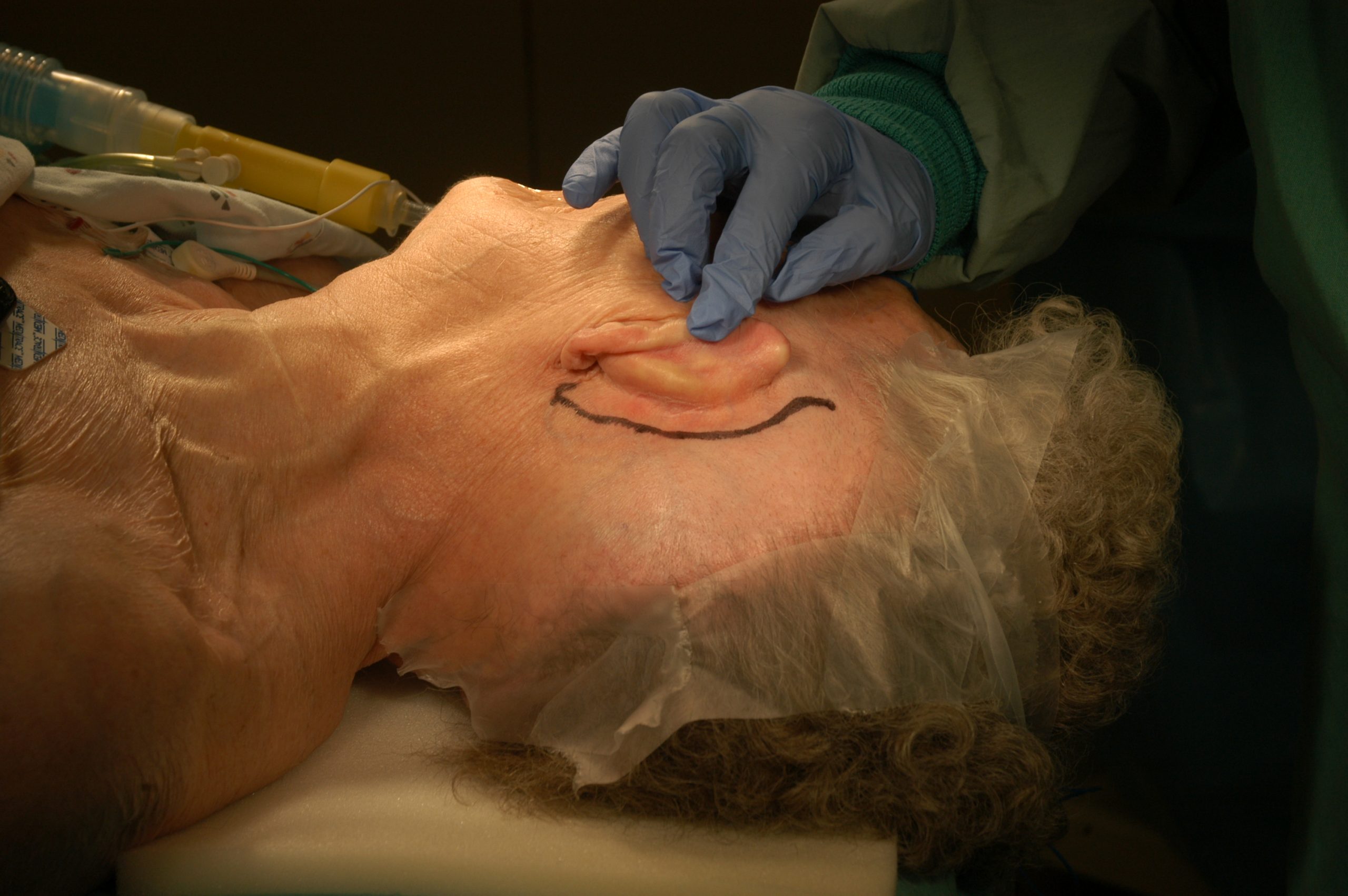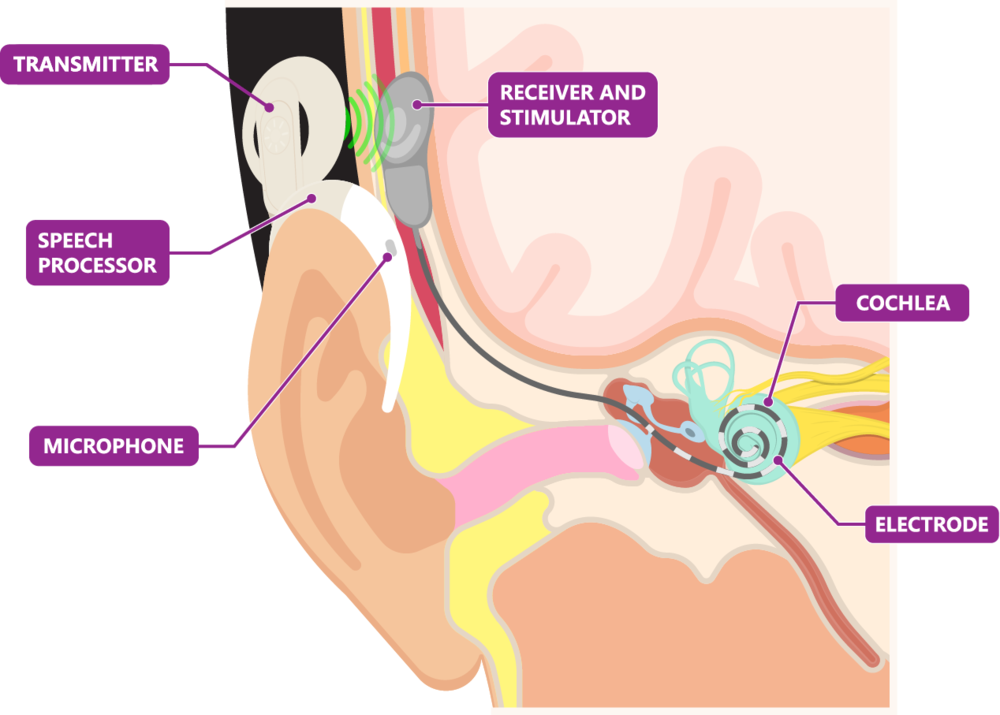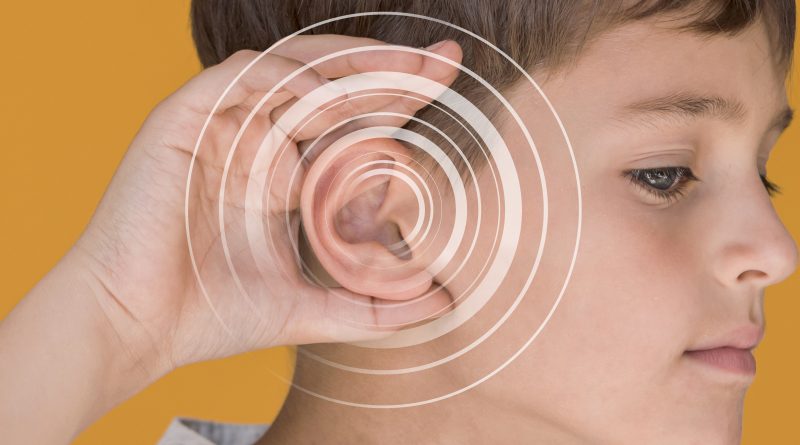Recover Your Hear Loss
 People with a cochlear implant cannot undergo MRI as it may dislodge the implant or demagnetize its internal magnet. In cases of dire need of an MRI, the magnet from the internal part may be removed surgically………
People with a cochlear implant cannot undergo MRI as it may dislodge the implant or demagnetize its internal magnet. In cases of dire need of an MRI, the magnet from the internal part may be removed surgically………
By Dr Ravi Meher
The cochlear implant surgical procedure is done in the hospital setting under general anaesthesia. The procedure usually takes 2.5 to 3 hours.
The surgeon performing cochlear implant surgery must be experienced in ear surgery and ideally in some aspects of neurotologic surgery. Intimate knowledge of the relevant surgical anatomy of the middle and the inner ear is important in properly performing the approach to the cochlea where in the electrodes are inserted. In addition, the relationship of the facial nerve, ear bones and inner ear needs to be understood properly to safely perform the surgical drilling to gain access to the middle ear. Once the middle ear has been opened, knowledge of the inner ear structures and the round window anatomy is vital. Variations in anatomy, ossification of the inner ear, facial nerve must be anticipated. These variations make surgery even more difficult.
The surgical procedure is done under microscopic control and strict sterile conditions are maintained. An S shaped Incision is made behind the ear and bone (mastoid) is exposed anteriorly till the level of the ear canal and posteriorly to allow for insertion and securing of the implant’s receiver. The mastoid bone is drilled and the air cells in the bone are opened. The external ear canal and ear drum are not disturbed during the procedure. A mastoid cavity (mastoidectomy) is created by drilling the surrounding mastoid air cells. Through this cavity, a small opening is made in the posterior ear canal wall to reach the middle ear. It is a critical step because facial nerve is very close and can be injured during drilling at this step. The middle ear structures are then visualised under high magnification and another opening is made in the inner ear near the round window. This opening which opens the basal turn of cochlea is called cochleostomy, through which the implant electrode is inserted. Next, bone behind the mastoid cavity is drilled to make a well for the internal magnet receiver of the implant. The receiver is then fixed in the well and secured by sutures. The functioning of the all the electrodes is confirmed by doing neural telemetry intraoperatively. This confirms the functional status and right positioning of all the electrodes. The wound is then closed in layers and an aseptic dressing is applied. Patient is kept on antibiotics and analgesics for around 7 days. Once the wound heals the external device is put and switched on usually after 3 weeks of the surgery.
 Complications
Complications
As with any surgical procedure, cochlear implant surgery may also have complications. These can be anaesthesia related which are because of drugs and anaesthetic gases. For most people, the risk of general anaesthesia is very low. However, for some with certain medical conditions, anaesthesia can be more risky.
 Surgical risk can be injury to the facial nerve. This nerve goes through the middle ear to give movement to the muscles of the face. It lies close to where the surgeon needs to place the implant, and thus it can be injured during the surgery. An injury can cause a temporary or permanent weakening or full paralysis of the face on the same side as of implant. Another complication is meningitis which is infection of the covering of the brain. Patients who have inner ear abnormality are at greater risk. Thirdly, there may be fluid leakage from a hole created in the inner ear to place the implant and is more commonly seen in patients with inner ear abnormality. Infection of the skin wound and blood or fluid collection at the site of surgery can occur and may require drainage of the collected blood and fluid with antibiotics. Also, severe infection at the site of implant can sometimes lead to extrusion or rejection of the implant. Some patients may suffer from attacks of dizziness or vertigo and tinnitus, the latter is ringing or buzzing sound in the ear. This usually settles with time. The nerve that gives taste sensation to the tongue also goes through the middle ear and may be injured during the surgery.
Surgical risk can be injury to the facial nerve. This nerve goes through the middle ear to give movement to the muscles of the face. It lies close to where the surgeon needs to place the implant, and thus it can be injured during the surgery. An injury can cause a temporary or permanent weakening or full paralysis of the face on the same side as of implant. Another complication is meningitis which is infection of the covering of the brain. Patients who have inner ear abnormality are at greater risk. Thirdly, there may be fluid leakage from a hole created in the inner ear to place the implant and is more commonly seen in patients with inner ear abnormality. Infection of the skin wound and blood or fluid collection at the site of surgery can occur and may require drainage of the collected blood and fluid with antibiotics. Also, severe infection at the site of implant can sometimes lead to extrusion or rejection of the implant. Some patients may suffer from attacks of dizziness or vertigo and tinnitus, the latter is ringing or buzzing sound in the ear. This usually settles with time. The nerve that gives taste sensation to the tongue also goes through the middle ear and may be injured during the surgery.
 People with a cochlear implant cannot undergo MRI as it may dislodge the implant or demagnetize its internal magnet. In cases of dire need of an MRI, the magnet from the internal part may be removed surgically. The magnet in these implants are rotable and it gets aligned with the magnetic field and there is no need to remove the magnet. There are certain implants which are compatible with 3 Tesla MRI. The external as well as internal part of implant may get damaged with contact sports, automobile accidents, slips and falls, or other impacts near the ear. The implant may have to be removed temporarily or permanently if an infection develops after the implant surgery or there is implant failure.
People with a cochlear implant cannot undergo MRI as it may dislodge the implant or demagnetize its internal magnet. In cases of dire need of an MRI, the magnet from the internal part may be removed surgically. The magnet in these implants are rotable and it gets aligned with the magnetic field and there is no need to remove the magnet. There are certain implants which are compatible with 3 Tesla MRI. The external as well as internal part of implant may get damaged with contact sports, automobile accidents, slips and falls, or other impacts near the ear. The implant may have to be removed temporarily or permanently if an infection develops after the implant surgery or there is implant failure.
The patient may develop irritation where the external part rubs on the skin and hence may necessitate temporary removal. The external parts of the implant may get damaged if it gets wet. Thus, the implantee would need to remove the external parts of the device while bathing, showering, swimming or participating in water sports. However, accessories are available which can be used to encase the implant while swimming.
(The author is Director Professor, Department of ENT & Head Neck Surgery, Maulana Azad Medical College, New Delhi)

